|
|
|
|
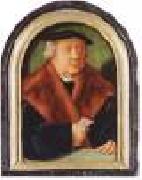 |
BRUYN, Barthel
|
|
German painter (b. 1493, Cologne, d. 1555, Cologne).
German Renaissance painter, active in Cologne from 1515. Known especially for his portraits, which combine Northern realism with Italian-inspired monumentality and breadth, Bruyn also painted religious works such as the high altar at Essen Cathedral (1522). A portrait of a man and three religious works are in the Philadelphia Museum; many of his works are in Germany. |
|
|
|
|
|
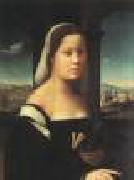 |
BUGIARDINI, Giuliano
|
|
Italian painter, Florentine school (b. 1475, Firenze, d. 1554, Firenze)
Italian painter and draughtsman. He trained in Florence in the workshop of Domenico Ghirlandaio. The influence of Ghirlandaio is apparent in his earliest known works, datable between c. 1495 and 1500, which include part of the altarpiece of the Nativity (Florence, Santa Croce) painted for the Castellani family. Apart from Ghirlandaio, his two most important early influences were Fra Bartolommeo and Mariotto Albertinelli. In 1503 Bugiardini joined the Compagnia di S Luca and began an association with Albertinelli that continued until 1509 when Albertinelli moved to the workshop of Fra Bartolommeo. Bugiardini's paintings of the Virgin and Child (e.g. c. 1510; Kansas City, MO, Nelson-Atkins Mus. A.) show the influence of the balanced classical compositions executed by Raphael in Florence between 1504 and 1508 (e.g. the Madonna of the Meadow, 1505, Vienna, Ksthist. Mus.; La Belle Jardini?re, 1507, Paris, Louvre). From Ghirlandaio's workshop and his study of antique sculpture in the Medici garden, Bugiardini would have known Michelangelo early in his career. Vasari mentioned Bugiardini as among the artists who went to Rome in 1508 to assist Michelangelo with the painting of the ceiling of the Sistine Chapel (Vatican) and who were almost immediately sent back to Florence. The influence of Franciabigio is clear in such works as the Birth of John the Baptist (1512; Stockholm U., Kstsaml.; autograph copy, Modena, Gal. & Mus. Estense) in which nature is not idealized, as compared to contemporary works in Rome. The signed and dated Madonna della palma (Virgin and Child with the Infant John the Baptist, 1520; Florence, Uffizi) suggests his familiarity with such contemporary Roman paintings by Raphael and his workshop as the Madonna of Divine Love (Naples, Capodimonte) or the Madonna of the Rose (c. 1518; Madrid, Prado). |
|
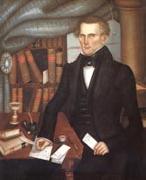 |
Bundy Horace
|
|
American portraits and landscapes painter, 1814-1883 |
|
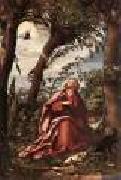 |
BURGKMAIR, Hans
|
|
German Northern Renaissance Painter, 1473-1531
German artist, famous for his paintings and woodcuts. A friend of D??rer, he studied in Strasburg and Venice, as well as Augsburg. He executed the woodcuts for Weißkunig and some of those in Teuerdank. His greatest works are the altar-pieces in Munich and Augsburg. |
|
|
|
 |
Burne-Jones, Sir Edward Coley
|
|
British Pre-Raphaelite Painter, 1833-1898
English painter and decorative artist. He was the leading figure in the second phase of the Pre-Raphaelite movement. His paintings of subjects from medieval legend and Classical mythology and his designs for stained glass, tapestry and many other media played an important part in the Aesthetic Movement and the history of international Symbolism. |
|
|
|
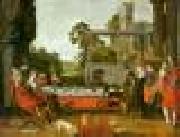 |
BUYTEWECH, Willem
|
|
Dutch Baroque Era Painter, ca.1591-1624
Dutch painter, draughtsman and etcher. Although he was born and died in Rotterdam, stylistically he belongs to the generation of young artists working in Haarlem at the beginning of the 17th century. He was nicknamed 'Geestige Willem' (Dut.: 'inventive, or witty, Willem') by his contemporaries, and during his short career he made an important and highly personal contribution to the new approach to realism in Dutch art. He was one of the first to paint interiors with merry companies
|
|
|
|
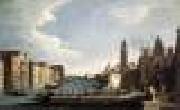 |
CANAL, Bernardo
|
|
Italian painter, Venetian school (b. 1664, Venezia, d. 1744, Venezia) |
|
|
|
|
|
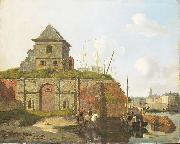 |
Carel Jacobus Behr
|
|
(9 July 1812 in The Hague - 11 November 1895) was a Dutch painter, watercolorist and draftsman. He was a pupil of Bartholomeus Johannes van Hove and mainly painted cityscapes, genre scenes and portraits.
In 1836 he produced, commissioned by The Hague municipal government, an image of the town hall there, which carried off the approval of connoisseurs. In 1837 he became a member of the Royal Academy in Amsterdam. His work is found in various collections and different exhibitions, like at the Hague in 1839, Rotterdam in 1840 and again at the Hague in 1841.
|
|
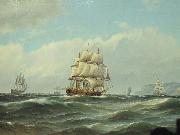 |
Carl Bille
|
|
painted Shipping off the Norwegian Coast in 1889 |
|
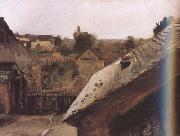 |
Carl Blechen
|
|
German Romantic, 1798-1840
was a German painter, specializing in fantastic landscapes, sometimes with demons and grotesque figures. Born in Cottbus, he drew the attention of prominent architect Karl Friedrich Schinkel, who cast him as a decorative painter. Blechen however aimed for higher work and began producing landscape paintings. In 1827 he went to Italy |
|
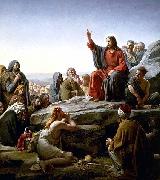 |
Carl Heinrich Bloch
|
|
(May 23, 1834 C February 22, 1890) was a Danish painter.
He was born in Copenhagen and studied with Wilhelm Marstrand at the Royal Danish Academy of Art (Det Kongelige Danske Kunstakademi) there.
His early work featured rural scenes from everyday life. From 1859 to 1866, Bloch lived in Italy, and this period was important for the development of his historical style.
His first great success was the exhibition of his "Prometheus Unbound" in Copenhagen in 1865. After the death of Marstrand, he finished the decoration of the ceremonial hall at the University of Copenhagen.
He was then commissioned to produce 23 paintings for the Chapel at Frederiksborg Palace. These were all scenes from the life of Christ which have become very popular as illustrations. The originals, painted between 1865 and 1879, are still at Frederiksborg Palace. |
|
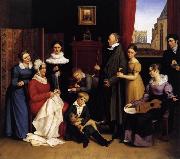 |
Carl Joseph Begas
|
|
Carl Joseph Begas (September 30, 1794 - November 24, 1854), was a German historical painter born at Heinsberg near Aachen. His father, a retired judge, destined him for the legal profession, but the boy's tastes pointed definitely in another direction. Even at school he was remarked for his wonderful skill in drawing and painting, and in 1812 he was permitted to visit Paris in order to perfect himself in his art.
He studied for eighteen months in the atelier of Antoine Jean Gros then began to work independently. In 1814 his copy of The Madonna della Sedia was bought by the king of Prussia, who was attracted by the young artist and did much to advance him. He was engaged to paint several large Biblical pictures, and in 1825, after his return from Italy, continued to produce paintings which were placed in the churches of Berlin and Potsdam. Some of these were historical pieces, but the majority were representations of Scriptural incidents. Begas was also celebrated as a portrait-painter, and supplied to the royal gallery a long series of portraits of eminent Prussian men of letters. At his death he held the post of court painter at Berlin.
|
|
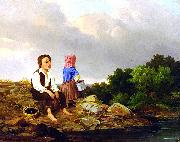 |
Carl Ludwig Brandt
|
|
(22 September 1831 Holstein, Germany - 1905) was a German-born artist who worked mostly in the United States.
Brandt was born near Hamburg, in Holstein, Germany. His father and grandfather were physicians in Hamburg. His father taught him drawing at the age of seven, and he subsequently studied in the principal galleries of Europe. He served in the First War of Schleswig (1848-1850), between Germany and Denmark.
He came to the United States in 1852. He painted several portraits previous to 1864, and in that year built his studio in Hastings-on-Hudson, New York, but lived in Europe from 1865 until 1869. He was chosen a national academician in 1872, and in 1883 was elected first director of the Telfair Academy of Arts and Sciences, Savannah, Georgia, where he resided in winter. At Telfair he offered art instruction and oversaw art acquisitions, including plaster casts, thus transforming a family mansion into a cultural institution.
|
|
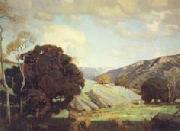 |
Carl Oscar Borg
|
|
Swedish-born American Sculptor, 1879-1947
was a Swedish painter who emigrated to the United States around 1900. Borg was influenced by the nature of Arizona and New Mexico, and his works were widespread in American galleries. Borg was a founding member of the Painter's Club of Los Angeles and the California Art Club. |
|
|
|
 |
Carl Wilhelm Barth
|
|
(1847 - 1919) was a Norwegian painter.
He was born in Christiania. He studied painting under Hans Gude from 1881 to 1883, and having worked as a naval officer until then, he specialized in marine art. He is represented with three works in the National Gallery of Norway.
He was the son of Jacob Bøckmann Barth and brother of Agnar Johannes Barth, both foresters.
|
|
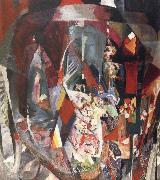 |
Carles Arthur Beecher
|
|
American Modernist Painter, 1882-1952
was an American Modernist painter. He was born in Philadelphia, Pennsylvania, and studied at the Pennsylvania Academy of the Fine Arts between 1900 and 1907. He studied with Thomas Pollock Anshutz, Hugh Breckenridge, Henry McCarter, Cecilia Beaux, and William Merritt Chase. In 1907 he traveled to France where he remained until 1910. In France, he greatly admired the works of Cezanne and Matisse, and became close friends with John Marin and Eduard Steichen. He displayed six landscapes in the Salon d'Automne of 1908. |
|
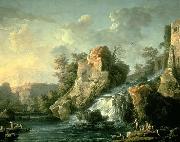 |
Carlo Bonavia
|
|
was an Italian painter known for idyllic landscape paintings, engravings and drawings. He was active from 1740 until his death in 1788. He is thought to be from Rome, but worked in Naples from about 1751 to 1788. He was trained in the Neapolitan landscape tradition of Salvator Rosa (1615-1673) and Leonardo Coccorante (1680-1750), but was much more strongly influenced by the work of Claude Joseph Vernet, who visited Naples in 1737 and 1746. |
|
 |
Carlo Bononi
|
|
Italian, 1569-1632,Italian painter. He was among the last great painters of the Ferrarese school, his style uniting warm Venetian colour with the lyrical effects of light and elegant draughtsmanship of Ludovico Carracci. He was a pupil of Giuseppe Mazzuoli (c. 1536-89), but his early activity is little documented. The Martyrdom of St Paul (Pommersfelden, Schloss Weissenstein), which is indebted to Mazzuoli and combines elements of Ferrarese and Venetian traditions, may represent the earliest phase of his development. Later, through a study of the art of Ludovico Carracci, modified by a response to Dosso Dossi and to Correggio, he developed a more individual style. An altarpiece of the Virgin with SS Maurilius and George (Vienna, Ksthist. Mus.) is unanimously dated before 1600. It is probable that Bononi made study tours to Bologna, Parma, Verona and Venice. Between 1605 and 1610 he spent two years in Rome (Baruffaldi), a visit confirmed by three paintings of scenes from the Life of St Paternian in the church of S Paterniano in Fano; dated between 1610 and 1612 (Emiliani), these reflect a direct study of Caravaggio and of his early Roman followers, such as Orazio Borgianni. |
|
|
|
 |
CAVALLINO, Bernardo
|
|
Italian Baroque Era Painter, ca.1616-1656
Italian painter and draughtsman. He was the most individual and most poetic painter active in Naples during the first half of the 17th century. He painted mainly small cabinet pictures, on canvas or on copper, for dealers and for highly cultivated private patrons; he had few public commissions and apparently never painted any large-scale decorations for private or ecclesiastical patrons. His subject-matter is largely derived from the Old and New Testaments, the Apocrypha, Tasso and from Roman history and mythology. Documentary evidence for his life and work is almost non-existent, and he remains enigmatic and elusive as a historical figure. Yet as a painter he is strikingly distinctive, uniting a refinement and virtuosity of brushwork with an intensely naturalistic observation of surfaces, and complex and dramatic compositions with an extraordinary brilliance of palette. Only eight pictures are signed, initialled or inscribed with Cavallino's name. No works are documented and only five may be tentatively identified with pictures in mid-18th-century Neapolitan collections described by Bernardo de Dominici. |
|
 |
CAVAROZZI, Bartolomeo
|
|
Italian painter, Roman school (b. ca. 1590, Viterbo, d. 1625, Roma).
Italian painter, active also in Spain. His formative years were spent in Rome, where he went as a boy and where his first teacher was the Viterbese painter Tarquinio Ligustri. Through Ligustri he became acquainted with the aristocratic Roman family headed by the Marchese Virgilio Crescenzi (d 1592) and eventually lived with them in their home near the Pantheon and studied at Giovanni Battista Crescenzi's academy of art. |
|
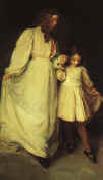 |
Cecelia Beaux
|
|
1824-1900
William Holbrook Beard Gallery
Beard was born in Painesville, Ohio. He studied abroad, and in 1861 moved to New York City, where in 1862 he became a member of the National Academy of Design.
He was a prolific worker and a man of much inventiveness and originality, though of modest artistic endowment. His humorous treatment of bears, cats, dogs, horses and monkeys, generally with some human occupation and expression, usually satirical, gave him a great vogue at one time, and his pictures were largely reproduced.
His brother, James Henry Beard (1814-1893), was also a painter. |
|
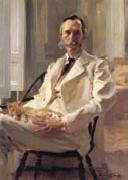 |
Cecilia Beaux
|
|
American figure and portrait painter , 1855-1942
American painter. She began her career painting on porcelain and producing lithographs and portrait drawings. She studied with Catharine Ann Drinker (1871), Francis Adolf van der Wielen (1872-3) and Camille Piton (1879), at the Pennsylvania Academy of the Fine Arts in Philadelphia (1877-8), and privately with William Sartain (1881-3). Under Sartain's guidance, she learnt to paint, producing her first major portrait, the Last Days of Infancy |
|
|
|
|
|
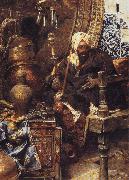 |
Charles Bargue
|
|
(c. 1826/1827?CApril 61883) was a French artist, a lithographer as well as a painter, who devised a drawing course.
Charles Bargue is mostly remembered for his Cours de dessin, one of the most influential classical drawing courses conceived in collaboration with Jean-L??on G??rôme. The course, published between 1866 and 1871 by Goupil & Cie, and composed of 197 lithographs printed as individual sheets, was to guide students from plaster casts to the study of great master drawings and finally to drawing from the living model.
Among the artists whose work is based on the study of Bargue's platework, is Vincent van Gogh who copied the complete set in 1880/1881, and (at least a part of it) again in 1890. |
|
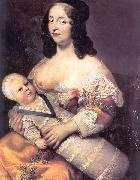 |
Charles Beaubrun
|
|
(Charles Bobrun) (1604 - 1692) was a French portrait painter active in Paris between 1630-70.
Charles Beaubrun was born at Amboise, a member of a distinguished family of painters. He studied under his uncle Louis Beaubrun (d. 1627). He and his cousin Henri Beaubrun (II) (1603 - 1677), were portrait painters in the courts of King Louis XIII and Louis XIV of France. Some of his work is jointly attributed to Henri. His youngest brother, Michel Beaubrun (d 1642), was also a painter. Charles Beaubrun died at Paris.
|
|
|
|
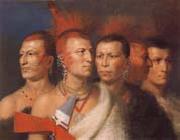 |
Charles Bird King
|
|
American Painter, 1785-1862,is a United States artist who is best known for his portraiture. In particular, the artist is notable for the portraits he painted of Native American delegates coming to Washington D.C., which were commissioned by government's Bureau of Indian Affairs. Charles Bird King was born in Newport, Rhode Island as the only child of Deborah Bird and American Revolutionary veteran Captain Zebulon King. The family traveled west, but when King was four years old, his father was killed and scalped by Native Americans near Marietta, Ohio. King and his mother moved back to Newport to live with Bird's mother. When King was fifteen, he went to New York to study under the portrait painter Edward Savage. At age twenty he moved to London to study under the famous painter Benjamin West at the esteemed Royal Academy. King returned to the U.S. due to the War of 1812 after a seven-year stay in London, and spent time working in Philadelphia, Baltimore, and Richmond. He eventually settled in Washington, due to the economic appeal that the burgeoning city offered. In the nation's new capital, the artist earned a solid reputation as a portraitist among politicians, and earned enough to maintain his own studio and gallery. King's economic success in the art world, particularly in the field of portraiture, had more to do with his ability to socialize with the wealthy celebrities, and relate to the well educated politicians of the time: His industry and simple habits enabled him to acquire a handsome competence, and his amiable and exemplary character won him many friendse . These patrons included John Quincy Adams, John Calhoun, Henry Clay, James Monroe, and Daniel Webster . |
|
|
|
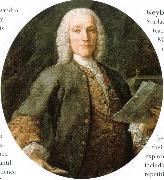 |
charles burney
|
|
Period: Classical (1750-1819)
Country: England
Born: April 07, 1726
Died: April 12, 1814 in Chelsea |
|
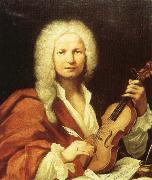 |
charles de brosses
|
|
(1709-77). President of the Parlement de Dijon, friend of the philosophes, and in Diderot's words ??une petite t??te gaie, ironique et satiriquee. His learned publications include important work on the origins of language (Traite de la formation m??canique des langues, 1765) and on primitive religion (Du culte des dieux fetiches, 1760). His Lettres familieres crites d Italie en 1739 et 1740, published posthumously in 1799 and much loved by Stendhal, offer a model of personal travel writing, in which detailed accounts of art works and monuments, not always complimentary, or a careful description of Vesuvius, addressed to Buffon, are interspersed with sprightly, enthusiastic accounts of the peculiarities and the aesthetic and sensual pleasures of life in Italy.
|
|
 |
Charles le Brun
|
|
French Baroque Era Painter, 1619-1690
French painter and designer. He dominated 17th-century French painting as no other artist; it was not until over a century later, during the predominance of Jacques-Louis David, that artistic authority was again so concentrated in one man. Under the protection of a succession of important political figures, including Chancellor Pierre S?guier, Cardinal Richelieu and Nicolas Fouquet, Le Brun created a series of masterpieces of history and religious painting. For Louis XIV and his chief minister Jean-Baptiste Colbert he executed his greatest work, the royal palace of Versailles: an almost perfect ensemble of architecture, decoration and landscape. After Colbert's death in 1683, he was no longer able to count on prestigious commissions |
|
|
|
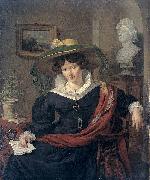 |
Charles Van Beveren
|
|
Charles van Beveren, born at Mechlin in 1809, was instructed in the rudiments of art in the academy of his native city and at Antwerp. He settled in Amsterdam in 1830, subsequently visiting Paris, Rome, and other cities of Italy, and distinguished himself as a painter of history, genre, and portraits. He died at Amsterdam in 1850. The best known of his works are:
The Confession of a Sick Girl (in the Pinakothek at Munich).
Male Figure. A study (in the Rotterdam Museum).
The Vision of St. Ignatius.
The Death of St. Anthony of Padua (in the church of Moses and Aaron at Amsterdam, his chef-d'oeuvre). |
|
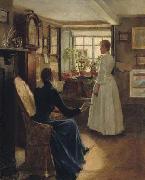 |
Charles W. Bartlett
|
|
(born 1 June 1860 in Bridport, Dorset) was an English painter and printmaker. He studied metallurgy and worked in that field for several years. At age 23, he enrolled in the Royal Academy in London, where he studied painting and etching. After three years of study in London, he entered the private studio school Academie Julian in Paris, where he studied under Jules Joseph Lefebvre (1836-1911) and Gustave Boulanger (1824-1888).
In 1889, he returned to England and married Emily Tate, but shortly thereafter, his wife and infant son died in childbirth. Bartlett then traveled to Europe, spending several productive years in Holland, Brittany and Venice with his friend and fellow artist Frank Brangwyn (1867-1956). Brangwyn is believed to have introduced Bartlett to Japanese prints. Bartlett produced some of his most important early works on the Continent, especially studies of peasants painted in broad areas of color. He was invited to join the Societe Nationale des Beaux-Arts in France in 1897. In 1898, he returned to England and married Catherine Kate Main. |
|
|
|
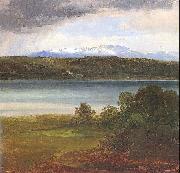 |
Christian Ernst Bernhard Morgenstern
|
|
(29 September 1805 - 12 Februar 1867) was a German landscape painter. Morgenstern is regarded as one of the pioneers in Germany of early Realism in painting. He gained this reputation in Hamburg 1826-1829 together with his contemporary Adolph Friedrich Vollmer while both were still studying; from 1830 onwards, Morgenstern, together with Friedrich Wasmann, Johan Christian Dahl and Adolph Menzel, introduced Munich to Realist painting.
Morgenstern was born in Hamburg as one of six children to a painter of miniatures, Johann Heinrich Morgenstern (1769-1813). After the early death of his father he was placed as an apprentice in the graphic workshop of the brothers Suhr. Cornelius Suhr took the young Morgenstern as his servant on a two-year journey through Germany to publicise the panorama prints which the brothers Suhr produced. 1822 followed another long journey to St. Petersburg, where they stayed for a year and to Moscow. On their return to Hamburg Morgenstern succeeded in leaving Suhr (Vollmer took his place). He became a student of the Hamburg painter Siegfried Bendixen with whom he stayed from 1824 to 1827, then continued his studies at the Royal Danish Academy of Fine Arts in Copenhagen (1827-1828) and undertook study journeys through Sweden and Norway. Bendixen introduced him to the wealthy aristocrat and supporter of the arts, Carl Friedrich von Rumohr, patron to many young Hamburg artists, on whose estate in Holstein he spent several summers. In 1830 Morgenstern went to Munich on Ruhmor's advice. He settled there permanently while undertaking extensive yearly study trips: for the first years through Bavaria, then in the summer of 1836 and in the following summers to the Alsace as guest of a patron of the arts. The winter 1839/40 he returned to Hamburg to stay with his mother. In 1841 he visited Venice and Trieste together with the landscape painter Eduard Schleich and in 1843, and again in 1846 the central Alps. In the summer of 1850 he stayed on Heligoland. |
|
|
|
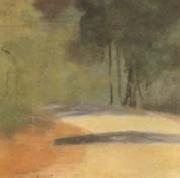 |
Clarice Beckett
|
|
Australian Painter, 1887-1935,Australian painter. She studied at the National Gallery School, Melbourne (1914-16), and with Max Meldrum became involved (c. 1917) with the Meldrum circle of artists, which included Colin Colahan (1897-1987), Justus Jorgensen (1893-1975), John Farmer (b 1897) and Percy Leason (1889-1959). In 1919 she moved to the seaside suburb of Beaumaris, where she lived and worked for the rest of her life. |
|
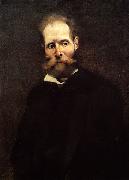 |
Columbano Bordalo Pinheiro
|
|
(Lisbon, 21 November 1857 - Lisbon, 6 November 1929), who is usually referred to as Columbano, was a Portuguese Realist painter. Usually considered the greatest Portuguese painter of the 19th century, he has been compared to the likes of Wilhelm Leibl and Thomas Eakins.
Columbano was the son of a mediocre romantic painter, Manuel Maria Bordalo Pinheiro, and the younger brother of the great caricaturist, Rafael Bordalo Pinheiro. He became the leading painter of his generation and the master of realism in Portuguese painting, specializing in portraiture. He was disciple of his father, of the painter Miguel Ângelo Lupi and the sculptor Simões de Almeida. After attempting twice for a bursar to study abroad finally in 1881 the countess of Edla, second wife of D.Fernando would finance his study in France. There he studied the work of French naturalist, realist and impressionist painters, like Courbet, Manet and Degas without losing his distinctive style which is often gloomy and intimist. He joined the "Grupo do Leão" (The Lion's Group), a usual meeting of artists, writers and intellectuals in a Lisbon downtown restaurant called "Leão de Ouro" (The Golden Lion) in order to discuss aesthetic issues and proclaim Naturalism against the academic art of the time. The group also included Rafael Bordalo Pinheiro, Antenio da Silva Porto, Marques de Oliveira and Jose Malhoa. He painted portraits of some of the greatest names of Portuguese society and culture of his time like Jose Maria de Eça de Queiroz, Teefilo Braga, Raul Brandão and had great psychological accuracy in defining the personality of those depicted. His most famous portrait was that of the poet Antero de Quental in 1889. In this haunting work Columbano seems to have anticipated Antero's suicide.
Columbano was a well known Republican, so it wasn't surprising that after the Republic proclamation, in 1910, he was invited to design the flag of the new regime and was nominated director of the National Museum of Contemporary Art, currently the Chiado Museum, in Lisbon, of which he was in charge from 1914 to 1927. The best collection of his paintings is in the Chiado Museum, in Lisbon. He's also represented in some of the finest Portuguese museums, like the National Museum Soares dos Reis, in Porto.
|
|
|

